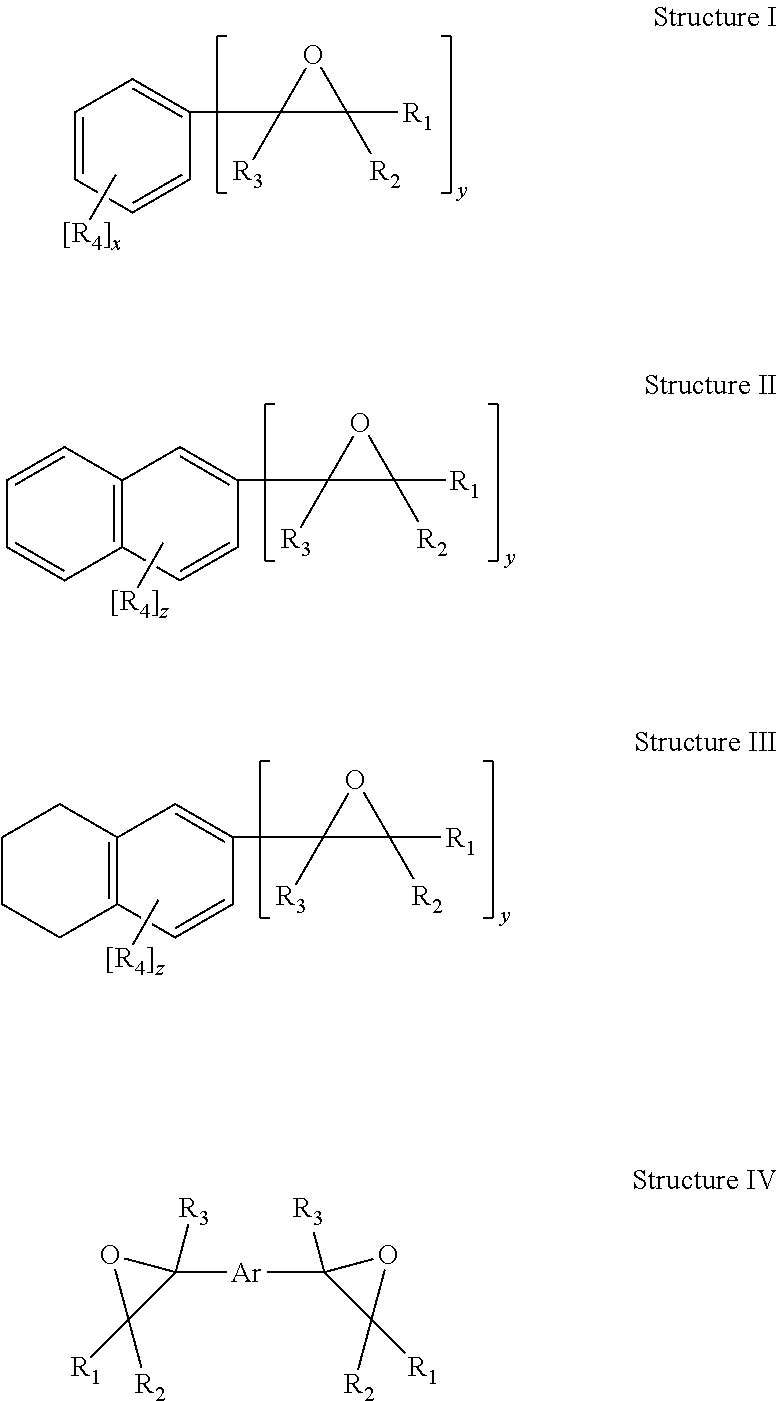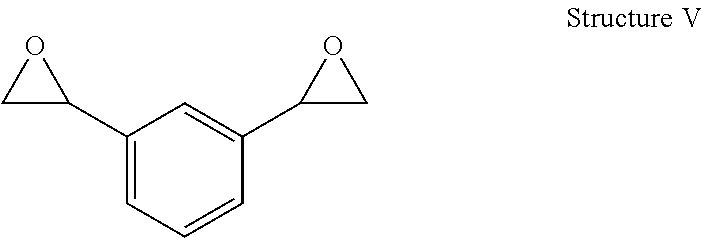Process for preparing divinylarene dioxides
a technology of divinylarene dioxide and process, which is applied in the field of process for preparing divinylarene dioxide, can solve the problems of not being able to achieve high yields of dvbdo, prior art processes that cannot produce dvbdo without, and not being able to efficiently and economically provide dvbdo. high yields, less waste, and less recycling
- Summary
- Abstract
- Description
- Claims
- Application Information
AI Technical Summary
Benefits of technology
Problems solved by technology
Method used
Image
Examples
example 1
[0069]DVB (1 g, 7.68 mmol, 80% DVB, 20% EVB), 3-MP (0.126 g, 1.54 mmol) and MTO (19.1 mg, 7.68×10−2 mmol) were dissolved in 10 mL dichloromethane and vigorously stirred in a three-neck flask equipped with a condenser, thermometer and an addition funnel. Hydrogen peroxide (31%, 3.370 g, 30.7 mmol) was added drop wise in the course of 15 minutes and the temperature was kept around 25° C. by cooling the flask in a water bath. The reaction mixture was vigorously stirred and further incubated at 25° C. The progress of the reaction was monitored by gas chromatography. After 8 hours no more starting material and mono-epoxidized DVB were present.
[0070]The resulting aqueous and organic phases were separated. The organic phase was washed with sodium thiosulfate solution (0.25 M) followed by washing with phosphoric acid (1M) and water. Disregarding the EVB content in the starting material, the desired product, DVBDO, was isolated in 70% yield.
example 2
[0071]The heat stability of DVBDO was assessed by incubating the product at 140° C. and observing if viscosity increase / polymerization occurred. Table I below summarizes how 3-MP concentration in the product affected heat stability.
[0072]
TABLE I3-MPconcentrationIncubation time(wt %)(hours)Observations50.5Sample solidified(crosslinked)1.71Significant viscosityincrease0.52No viscosity increase
example 3
[0073]Phosphotungstic acid (H3{PO4(WO3)12}, 0.1 g, 0.03 mmol) was dissolved in water (1 mL). Phosphoric acid (30%, 0.022 g, 0.07 mmol) was added, followed by H2O2 (29%, 0.102 g 0.9 mmol). The reaction mixture was stirred at 20° C. for 30 minutes when Aliquat 336 (0.126 g, 0.3 mmol) was added in dichloroethane solution (5 mL). The reaction mixture was stirred at 20° C. for 20 minutes. Then DVB (1 g, 8 mmol, 80% DVB, 20% EVB) in dichloroethane solution (5 mL) was added and the temperature was raised to 50° C. H2O2 (29%, 3.6 g, 32 mmol) was added to the mixture dropwise. The reaction mixture was stirred at this temperature for 6 hours. The reaction mixture was worked up as described in Example 1. A resultant DVBDO product was formed in 20% yield.
PUM
| Property | Measurement | Unit |
|---|---|---|
| mole ratio | aaaaa | aaaaa |
| temperature | aaaaa | aaaaa |
| viscosity | aaaaa | aaaaa |
Abstract
Description
Claims
Application Information
 Login to View More
Login to View More - R&D
- Intellectual Property
- Life Sciences
- Materials
- Tech Scout
- Unparalleled Data Quality
- Higher Quality Content
- 60% Fewer Hallucinations
Browse by: Latest US Patents, China's latest patents, Technical Efficacy Thesaurus, Application Domain, Technology Topic, Popular Technical Reports.
© 2025 PatSnap. All rights reserved.Legal|Privacy policy|Modern Slavery Act Transparency Statement|Sitemap|About US| Contact US: help@patsnap.com



